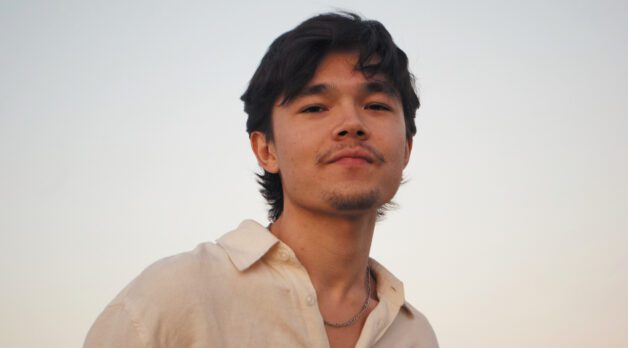Alex Ullom
 Alex Ullom
Alex Ullom

Four zoomers get into a car and hit the road, quickly settling into the familiar rhythms of longtime friends catching, but eventually notice that a promised bend in the road never arrived. When they stop, a screaming, zombie-like horde emerges from the woods, so they hit the gas and keep driving. Night turns to day and hours to weeks as the group struggles to understand what’s happening and why—or, at least, adapt to the uncanny new situation. Similarly, viewers of It Ends (a title that niftily acts as a promise) are taken on a continuously surprising journey that toys with, then rejects, genre expectations: What initially presents as a horror film, or possibly a puzzle film à la Cube, turns out to be neither. First-time writer-director Alex Ullom was partly inspired by Slacker, and a big part of the point of the film, as he describes it, was to shift from horror to hangout.
Ullom grew up in Tampa to parents who were initially skeptical of his desire to pursue film. “When I was 18, I had a pretty serious mental health crisis that made me reevaluate what I was doing in my life,” he explains. “I started in computer science, then I was like, ‘I’m not doing this.’ I gave a PowerPoint presentation to my parents to allow me to pursue film, won them over and went to Florida State.” That’s where he met key collaborators like It Ends producers Carrie Carusone and Evan Barber and also how he got access to the virtual production facility in which most of the film was shot. Florida State had built a mini volume LED “in an abandoned warehouse that they had acquired. FSU Film invested in it to help alumni and were like, ‘If you could bug test this and figure this out, you can use it.’ Certain scenes were just shot in a medium because that was the only way we could stabilize the background. I was worried that the visual engagement and shift of genres from horror to hangout yapping wouldn’t hold attention enough, so instead of [mobile game] Subway Surfers in the bottom right of the frame, we just have driving motion behind their heads. Unfortunately for us, we needed to shoot in a car for the entire movie, and the entrance into this facility was a normal doorway. So, we had to literally plasma cut a Jeep into parts, then reassemble it back on the stage. That was probably the biggest production hurdle.”
Financing began after Ullom posted a sketch on YouTube that went viral: “Someone commented on the video and said, ‘I would pay for more of this.’ And I commented back, ‘Oh, for real?’” Another early investor was a player Ullom met at a VR poker game. (“There’s a great overlap between independent film investors and gamblers,” he notes.) Casting his four leads off Instagram, Ullom completed principal photography in 20 shooting days, then “called in some favors at a local national park in Gainesville” for the sequences that were actually shot outside. After seeing a rough cut, production company Snoot Entertainment came on board with additional financing. Currently in post while targeting a festival premiere next year, Ullom notes that “long term, I do want to form a production company to try to make more small, character-driven genre pieces.”
Of this film’s metaphorical implications, Ullom notes that It Ends is, in part, about “Gen Z graduating into a dying republic where there’s no set moral system or ideas of values. The promise of a future or nuclear family is dead, so enter the world and form your own moral system, and good luck. That was what it felt like graduating college—it is unintentionally a pandemic movie because of the isolation. I think this movie’s for not just specifically Gen Z, but for that young adult stage when people are a little bit lost and just trying to find some sense of peace in all of this.”—Vadim Rizov/Image: Brittany Young
